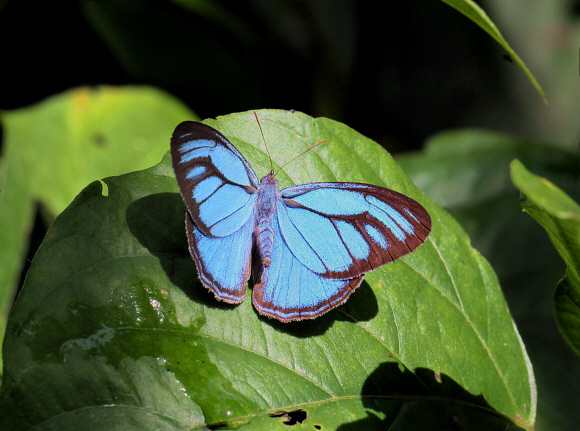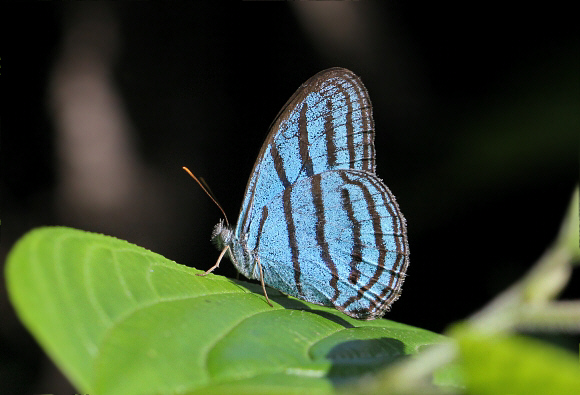
Introduction
There are 1100 known species of Satyrinae in the neotropical region. About 400 of these are placed in the Euptychiina. Butterflies within this tribe include the “ringlet” genera Euptychia, Magneuptychia, Harjesia, Cissia, Caeruleuptychia, Magneuptychia, Harjesia, etc.; together with Oressinoma and the various “wood nymph” genera i.e. Parataygetis, Posttaygetis, and Taygetis. Most are inhabitants of the forest understorey and tend to fly close to the ground. They generally avoid sunlight and prefer to fly at dawn or on cloudy days when light levels and temperatures are low.
Until fairly recently, almost all of the “ringlets” were placed in the genus Euptychia, but revisions by Forster and Lamas divide this “convenience” genus into a number of smaller genera, on the basis of anatomical differences and larval foodplants. There are 42 species of “blue ringlets”, now variously allocated to the genera Caeruleuptychia, Cepheuptychia, and Chloreuptychia.
There are 5 known species of Cepheuptychia. This species is found throughout the upper Amazonian region.
Habitats
Cepheuptychia cephus occurs in tropical rainforest at elevations between about 100-800m.
Lifecycle
I have no data regarding any Cepheuptychia species, but it is likely that the lifecycle will be similar to that of Chloreuptychia, as described below:
The egg is globular and shining white. Chloreuptychia lay their eggs singly on Eleusine, Oplismenus, and Ichnanthus (Poaceae) where these grasses grow around the base of trees. When fully grown the larva is mottled in shades of brown, and has a row of diamond-shaped marks along the back. Its head is black with a pair of short horns that bear auxiliary spines. The tip of the abdomen bears a pair of caudal prongs. In common with almost all other Satyrine larvae, it feeds nocturnally. The pupae of Chloreuptychia are wedge-shaped, mottled in shades of brown, and are formed attached by the cremaster to a stem, projecting horizontally.
Adult behaviour
This species is usually seen close to narrow streams in the vicinity of bamboo. Males have favoured sunspots where sunlight filters through the foliage in the early morning. They perch for long periods at these sites to await passing females. During the heat of the day, both sexes hide away in shady areas of undergrowth.
It is likely that the wings reflect high levels of ultra-violet, enabling the butterflies to locate potential mates visually in the dark environment where they breed. The vertical lines on the underside are an example of disruptive coloration. They help break up the outline of the wings into separate shapes, making it more difficult for a bird to detect the butterfly.

